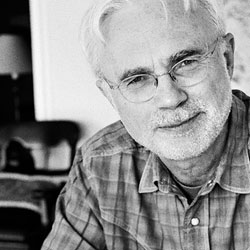In this day and age, what is the importance of the live music experience? (more…)
Posts Tagged ‘john adams’
-
Video: Why Hear It Live?
Topic: Audience, Creativity | Tags: alan gilbert, amos yang, brent assink, charles dutoit, jesse rosen, john adams, video
October 17, 2012 by Beth Hondl | Comments (0)
-
Podcast: Chapter Six – The Creative Challenge, Off the Stage
In a culture that exalts the individual, creativity is thought of first and foremost as the distinctive stamp of a personality, the outpouring of a specific genius or talent. But organizations can and must be creative, too, if they hope to endure and thrive. In the face of financial woes, aging audiences, dwindling arts education and the momentum of an increasingly digital universe, orchestras are challenged as never before to find creative ways of making music and making it matter to their communities.
This podcast was developed from our public forum in March 2012, Talking About Creativity and a “Conducting Business” podcast by New York radio station WQXR.
Chapter Six – The Creative Challenge, Off the Stage
Play | Download | Transcript
Topic: Creativity | Tags: brent assink, christopher pinelo, ed sanders, john adams, john shafer, margo drakos, mason bates, mtt, podcast, steve winn
May 24, 2012 by Beth Hondl | Comments (0)
-
Podcast: Chapter Five – Orchestral Creativity, on the Stage
Where does the marvel of musical creativity come from and how does it work? What parts do muses and inspiration, intuition and the subconscious, hard work and happy accident play in the process? In this podcast, we examine the ways in which creativity can flourish, falter and forge new pathways in the symphony orchestra hall.
This podcast was developed from our public forum in March 2012, Talking About Creativity.
Chapter Five – Orchestral Creativity, on the Stage
Play | Download | Transcript
Topic: Creativity | Tags: john adams, margo drakos, mason bates, mtt, podcast, steven winn
May 23, 2012 by Beth Hondl | Comments (0)
-
Event video: Talking About Creativity Roundtable and Audience Q&A
One last video from our Talking About Creativity event in San Francisco is now available for viewing — the roundtable discussion and audience Q&A.
Read the Talking About Creativity Roundtable transcript (pdf)
Participants include: Mark Clague, Professor of Music, University of Michigan; Ed Sanders, Group Marketing Manager, Creative Lab at Google; Margo Drakos, cellist and Co-founder, InstantEncore; John Adams, composer; Mason Bates, composer; Brent Assink, Executive Director, San Francisco Symphony; and Steven Winn, San Francisco arts journalist and critic.
Topic: Creativity | Tags: brent assink, ed sanders, john adams, margo drakos, mark clague, mason bates, steven winn, video
April 23, 2012 by Beth Hondl | Comments (0)
-
Event video: John Adams, Mason Bates, Mark Clague – Talking About Creativity
This is Spotlight Conversation #1 from our Talking About Creativity event in San Francisco, March 17, 2012.
Composers John Adams and Mason Bates talk about writing music for the modern orchestra, perceptions about classical music, tweeting in the concert hall, the role of technology and more. Moderated by Professor Mark Clague of the University of Michigan.
Topic: Creativity | Tags: john adams, mark clague, mason bates, video
March 20, 2012 by Beth Hondl | Comments (0)
-
John Adams: The Maverick and the Orchestra
Where is music headed in the next twenty or fifty years? The beautiful thing is… no one knows. Just when you think an instrument (or the orchestra) may have lost its relevance to a mass audience, you’ll be surprised by where composers take it next. This post is adapted from an essay composer John Adams wrote for the book American Mavericks: Musical Visionaries, Pioneers, Iconoclasts.
 I grew up playing the clarinet. My father was my first teacher. He had played it during the 1930s and ’40s, when Benny Goodman and Artie Shaw were the pop culture stars of their day. By the time I got to college the electric guitar and heavily amplified rock music had replaced big band swing, and the clarinet was a ludicrously old-fashioned instrument. Paul McCartney used it in a song about retired people to set the tone for “When I’m Sixty-Four.” Grace Slick held an old metal clarinet in her lap for the cover of the Jefferson Airplane’s Surrealistic Pillow. By then it had become little more than a tchotchke. But there was no clarinet on any of her songs, and none I remember on any of the other great albums from that era.
I grew up playing the clarinet. My father was my first teacher. He had played it during the 1930s and ’40s, when Benny Goodman and Artie Shaw were the pop culture stars of their day. By the time I got to college the electric guitar and heavily amplified rock music had replaced big band swing, and the clarinet was a ludicrously old-fashioned instrument. Paul McCartney used it in a song about retired people to set the tone for “When I’m Sixty-Four.” Grace Slick held an old metal clarinet in her lap for the cover of the Jefferson Airplane’s Surrealistic Pillow. By then it had become little more than a tchotchke. But there was no clarinet on any of her songs, and none I remember on any of the other great albums from that era. Imagine: I thought my life in music was already foreclosed due to an error in the instrument I’d chosen at a very young age.
But thirty years later, the clarinet is still around, and it has reappeared as an important instrument in styles I never would have imagined back in the 1960s. (more…)
Topic: Creativity | Tags: american mavericks, john adams
March 9, 2012 by Beth Hondl | Comments (0)


